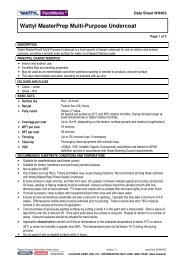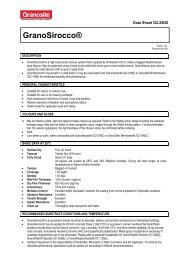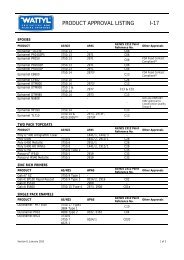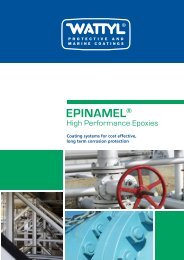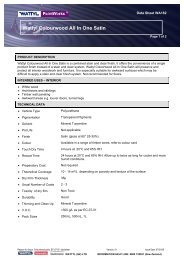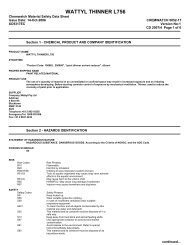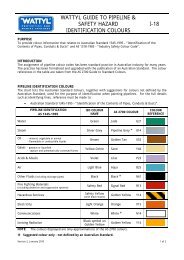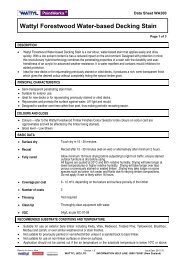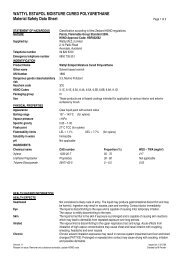Surface Preparation - Ferrous Metals - Wattyl Web Customer Service
Surface Preparation - Ferrous Metals - Wattyl Web Customer Service
Surface Preparation - Ferrous Metals - Wattyl Web Customer Service
You also want an ePaper? Increase the reach of your titles
YUMPU automatically turns print PDFs into web optimized ePapers that Google loves.
SURFACE PREPARATION<strong>Ferrous</strong> MetalI-10Soluble SaltsHydrojetting significantly reduces the level of soluble salts on the steel surface. If these salts are notremoved prior to painting they can cause osmotic blistering and lead to failure within a very short time.Levels of above 10 – 20 μg/cm 2 have been shown to cause coating failure particularly under immersionconditions.Dry blasting does give partial removal of these soluble salts, however, it also tends to trap contaminantsin crevices and foldovers created when the surface is deformed during dry abrasive blasting.Soluble salt levels are specified in the NACE hydrojetting standard. They are not specified in dry blastingstandards, but are carried out for tank coating work and for other areas where there is a high risk for thepresence of soluble salts. Generally speaking one of the main advantages of hydrojetting, if carried outcorrectly, is the removal of soluble salts and for this reason it is not considered necessary to specifysoluble salt concentrations as a part of the surface preparation standard unless it is suspected that theyhave not been removed.Recommendation – soluble salt testing is only necessary as part of the surface preparation standard inspecial cases.Refer AS 3862, AS/NZS 3894.6 and ISO 8502-2.Which water should be used?Fresh potable water alone should always be used – never seawater. If seawater is used followed by freshwater washing, then the steel is initially exposed to high levels of chlorides. With corroded steel, it ispossible to identify where salt levels are highest (corroded areas) – this is impossible with a surfacehydrojetted with seawater and fresh water rinsed. While the surface can be tested for chlorides it isimpractical to test the entire area and to assess if they have all been removed, until the coating breaksdown.Recommendation – always hydrojet with fresh water.4. SLURRY BLASTING – WATER/ABRASIVEThis is the generic name for all types of abrasive blasting that contain water – from introducing smallquantities of fresh potable water into a stream of dry abrasive, to injection of a small quantity of abrasiveinto a high pressure water stream.One of the major advantages of slurry blasting is the removal of soluble salts combined with the creationof a profile. However, the removal of the slurry can be a problem and it is always advisable afterwards towash the surface down with fresh water prior to coating application in order to remove any abrasive fromthe surface.NACE standards were only produced for hydrojetted surfaces.Version 2, January 2010 5 of 8



